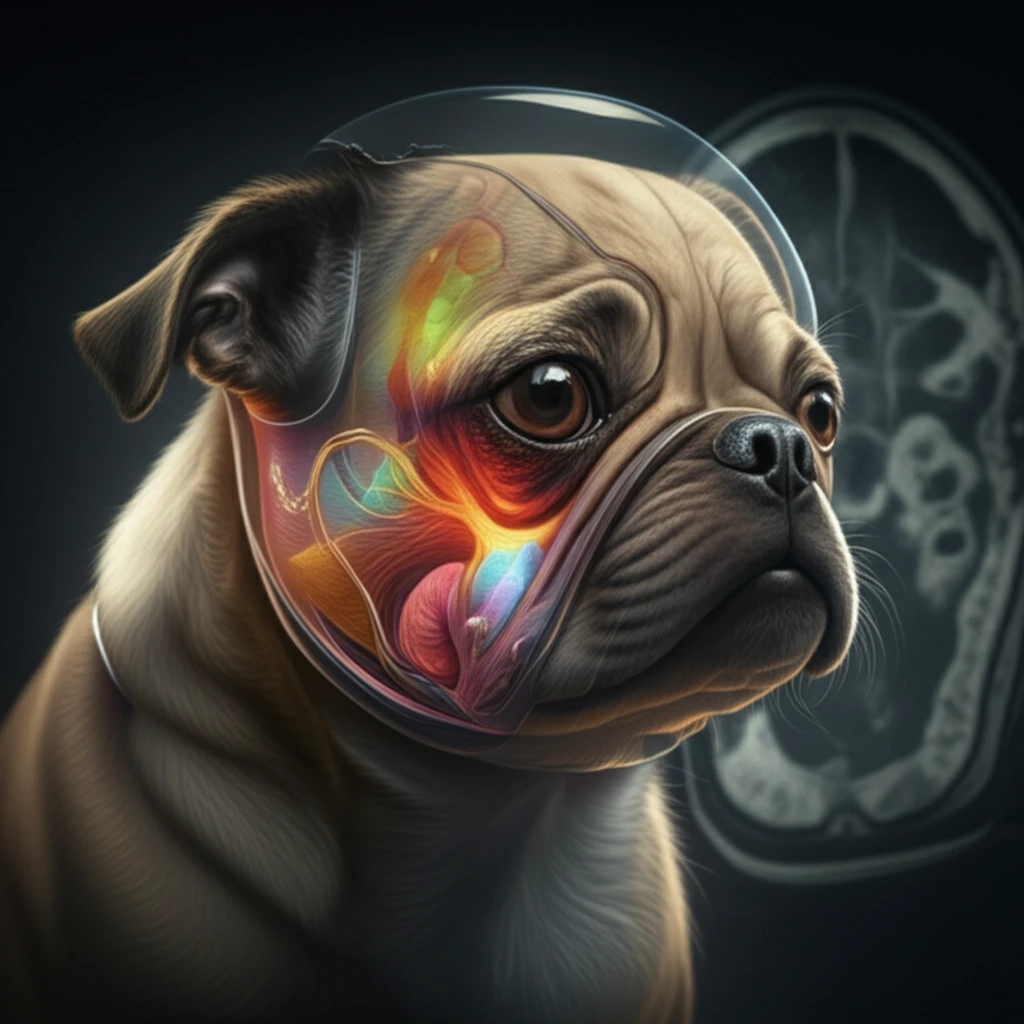
Snoring and Short Snouts: How MRI is Changing the Game for Brachycephalic Dogs
"Advanced imaging reveals the hidden airway issues in breeds like Pugs and Bulldogs, paving the way for better treatments and happier pets."
If you're a pet parent to a Bulldog, Pug, or Shih Tzu, you're likely familiar with the snorts, snores, and sometimes, the outright struggles to breathe that come with these breeds. Known as brachycephalic dogs, these companions have been selectively bred for their adorable, flat faces. However, this charming trait comes with a significant downside: brachycephalic obstructive airway syndrome (BOAS).
BOAS is a condition that affects the upper airways, making it difficult for these dogs to get enough air. The shortened facial structure leads to a crowded airway, often involving stenotic nares (narrowed nostrils), elongated soft palates, and tracheal hypoplasia (a smaller windpipe). Imagine trying to breathe through a pinched straw—that's the daily reality for many brachycephalic dogs.
Traditionally, diagnosing and understanding BOAS has been challenging, relying on physical exams and sometimes invasive procedures. But now, advancements in veterinary imaging, particularly magnetic resonance imaging (MRI), are providing a clearer picture of what's happening inside these dogs. A recent study published in 'The Journal of Veterinary Medical Science' explores how MRI is revolutionizing our understanding and treatment of BOAS, offering hope for improving the lives of our beloved flat-faced friends.
MRI: A Window into the Brachycephalic Airway

Magnetic Resonance Imaging (MRI) is non-invasive and provides a superior resolution to view the soft tissues composing the upper airway. It’s accurate, reproducible, and doesn’t use ionizing radiation, making it a safe option for repeated evaluations. Unlike X-rays or CT scans, MRI excels at differentiating between different types of soft tissues. This is crucial when assessing the complex anatomy of a brachycephalic dog's airway, where subtle changes can significantly impact breathing.
- Significant Differences: The MRI scans revealed notable differences in skull length, soft palate length-to-skull ratio, and soft palate thickness between brachycephalic and non-brachycephalic breeds.
- Volume Matters: Brachycephalic dogs had smaller nasopharyngeal volumes, meaning less space for air to pass through.
- Soft Palate Shape: The shape of the soft palate varied significantly. Brachycephalic dogs often had thicker, more irregular soft palates that further obstructed their airways.
Looking Ahead: Better Breathing for Brachycephalic Breeds
The use of MRI in assessing brachycephalic dogs is more than just a diagnostic tool; it's a pathway to better, more targeted treatments. By understanding the specific anatomical challenges each dog faces, veterinarians can tailor surgical interventions or management strategies to maximize their effectiveness. As research continues, MRI will likely play an increasingly important role in helping brachycephalic breeds breathe easier and live happier, healthier lives.
